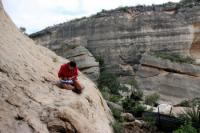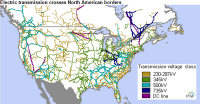-
Analyzing bedrock could help builders, planners identify safe building zones

Research could give builders and urban planners more detailed information about how susceptible areas are to landslides and earthquakes. The researchers focused on bedrock, just beneath the soil and roots and the Earth’s surface. Bedrock is the layer at the bottom of what geologists refer to as the “critical zone” because its cracks and fractures provide pathways for air and water, which break down rock and form the soil that is an essential ingredient for all living organisms.
-
-
Inspired by cats’ eyes, new camera can look inside nuclear reactors

Currently 11 percent of electricity worldwide is generated by nuclear reactors. There are 435 reactors in operation with another 71 under construction. Engineers, drawing inspiration from the eyes of cats, have created a new camera that can see radiation coming from nuclear reactors — boosting safety, efficiency, and helping during nuclear disaster emergencies.
-
-
PNNL to help DHS address critical infrastructure vulnerabilities
The Department of Energy’s Pacific Northwest National Laboratory (PNNL) has been named a supporting laboratory to the National Infrastructure Simulation and Analysis Center (NISAC). NISAC is a Department of Homeland Security (DHS) program which addresses the potential vulnerabilities and consequences of disruption of U.S. critical infrastructure. PNNL says it will contribute advanced computer modeling and simulation capabilities to look at the dependencies, interdependencies, vulnerabilities, and complexities of important critical infrastructure sectors such as dams, water, transportation, energy, and information technology.
-
-
Concrete innovation makes Seattle skyscraper stable
All coupling beams in the 1.5 million-square-foot Lincoln Square Expansion — which includes luxury condos, a hotel, dining, retail and office space in two 450-foot towers in the heart of Seattle suburb Bellevue, Washington — are made of fiber-reinforced concrete using a unique design. These concrete coupling beams span doorways and windows, helping walls with such openings in them to function as a single structural unit, while bolstering the building as a whole against earthquakes. Traditionally, coupling beams are reinforced with a labyrinth of rebar, adding a great deal of time, cost and complexity to the construction process.
-
-
Tsunami-prone nations should follow Japan’s new approach to coastal defenses
Japan’s lead in implementing sea defense improvements to guard against future disasters is an important reference point for other tsunami-prone nations. In the wake of the March 2011 Fukushima disaster, Japan has drawn new engineering guidelines which have transformed Japan’s coastal defenses, and has devised new ways to keep its coastlines safe in the future. Other nations in known tsunami risk areas, however, have not yet followed suit.
-
-
Bad governance is a threat to freshwater supply
Scientists have analyzed nineteen different characteristics critical to water supply management in 119 low per capita income countries and found that vulnerability is pervasive and commonly arises from relatively weak institutional controls. The study sought to identify freshwater supply vulnerabilities using four broad categories: endowment (availability of source water), demand, infrastructure, and institutions (for example, government regulations).
-
-
U.K. bolsters flood defenses
In 1953, more than 300 people died in the United Kingdom alone when heavy storms swept a high spring tide over sea defenses and across coastal towns in north-east England and Scotland. Today floods still make headlines but our ability to limit their effects has come a long way. Flooding costs the United Kingdom £2.2 billion a year in defenses and repairs, and annual spending must keep growing just to maintain present defenses. That is a massive investment, but history — and recent history at that — shows that the risk of flooding should not be underestimated.
-
-
Developing nuclear cladding to withstand Fukushima-like meltdown conditions
Like much of the rest of the world, thousands of scientists and engineers watched in March 2011 as Japan’s Fukushima Daiichi nuclear reactors exploded. The fuel’s cladding, a zirconium alloy used to contain the fuel and radioactive fission products, reacted with boiling coolant water to form hydrogen gas, which then exploded, resulting in the biggest nuclear power-related disaster since Chernobyl. Challenged by this event, two research teams have made progress in developing fuel claddings that are capable of withstanding the high temperatures resulting from a Loss of Coolant Accident (LOCA), like that at Fukushima.
-
-
2013 attack on Metcalf, California power grid substation committed by “an insider”: DHS
A senior DHS official last Wednesday revealed that a 2013 sniper attack on a Metcalf, California energy grid substation – which the top U.S. electrical utility regulator has called “the most significant incident of domestic terrorism involving the grid that has ever occurred” — may have been committed by someone on the inside. The attackers fired more than 100 rounds of .30-caliber rifle ammunition into the radiators of seventeen electricity transformers, which caused the radiators to leak thousands of gallons of oil, which made electronics overheat and shut down.
-
-
Philippines coastal areas go underwater due to sea level rise
More than 167,000 hectares of Philippines coastland — about 0.6 percent of the country’s total area — are projected to go underwater in, especially in low-lying island communities, according to research by the University of the Philippines. Low-lying countries with an abundance of coastlines are at significant risk from rising sea levels resulting from global warming. According to data by the World Meteorological Organization, the water levels around the Philippines are rising at a rate almost three times the global average due partly to the influence of the trade winds pushing ocean currents. On average, sea levels around the world rise 3.1 centimeters every ten years. Water levels in the Philippines are projected to rise between 7.6 and 10.2 centimeters each decade.
-
-
Managing urban stormwater runoff better
As meteorologists monitor the El Nino condition currently gaining strength in the Pacific Ocean, Californians look with hope to the much-needed rain and snow it could yield. But if Californians are going to make the most of the precipitation, they need to put a LID on it. LIDs, or low-impact development technologies, mimic pre-urban stream functions. Examples are green roofs that absorb and evapotranspire rainfall; rainwater tanks attached to homes and other buildings; and permeable pavement for roads, driveways and parking lots. Rainwater could even be used in the home for toilet flushing and laundry.
-
-
Grid Security Conference focuses on information sharing among stakeholders
More than 300 industry and federal partners are participating in the North American Electric Reliability Corporation’s (NERC) annual grid security conference, or GridSecCon, in Philadelphia, which opened on Wednesday and ends today. The conference is focusing on key cyber and physical security issues and training for enhancing the security and resiliency of the North American bulk power system. Topics of panel discussions include upgrades to NERC’s E-ISAC, cyber and physical security technology options, the transition to Version 5 of NERC’s critical infrastructure protection standards; and expectations for NERC’s third grid security exercise, GridEx III, which takes place 18-19 November.
-
-
Will the Supreme Court kill the smart grid?
On 30 April, Tesla’s Elon Musk took the stage in California to introduce the company’s Powerwall battery energy storage system, which he hopes will revolutionize the dormant market for household and utility-scale batteries. A few days later, the Supreme Court announced that it would hear a case during its fall term that could very well determine whether Tesla’s technology gamble succeeds or fails. At issue is an obscure federal policy known in the dry language of the electricity business as “Order 745,” which a lower court vacated last year. Order 745 allowed electricity customers to be paid for reducing electricity usage from the grid — a practice known as “demand response.” It also stipulated that demand response customers would be paid the market price for not using the grid — like the power industry’s version of paying farmers not to grow corn. This case, ultimately, is far more significant than getting paid for not using electricity. It’s about who gets to set the rules of the road for emerging technology in the electricity sector — the states or the federal government — and whether the United States will be able to modernize its energy policy the same way that it would like to modernize its power grid.
-
-
Improve cybersecurity in energy delivery
Cyber networks support many important functions within energy delivery systems, from sending data between a smart meter and utility to controlling oil or gas flow in a pipeline. However, they are vulnerable to disturbances. According to the ICS-CERT Monitor, a publication of the U.S. Department of Homeland Security, a third of the 245 reported cyber incidents in industrial control systems that happened in 2014 occurred in the energy sector. The U.S. Department of Energy (DoE) initiative awards $28.1million to a consortium of eleven universities and research organizations, with the goal of improving computer/communication networks for energy delivery systems like power grids and pipelines.
-
-
Protecting the U.S. power grid from cyberattacks

In the first half of Fiscal Year 2015, the Industrial Control Systems Cyber Emergency Response Team (ICS-CERT), part of the Department of Homeland Security, responded to 108 cyber incidents impacting critical infrastructure in the United States. As in previous years, the energy sector led all others with the most reported incidents. Researchers from Florida International University’s (FIU) College of Engineering and Computing have teamed up with four other universities and a utility company to help safeguard the nation’s power utilities from cyberattacks.
-
More headlines
The long view
Water Wars: A Historic Agreement Between Mexico and US Is Ramping Up Border Tension
As climate change drives rising temperatures and changes in rainfall, Mexico and the US are in the middle of a conflict over water, putting an additional strain on their relationship. Partly due to constant droughts, Mexico has struggled to maintain its water deliveries for much of the last 25 years, deliveries to which it is obligated by a 1944 water-sharing agreement between the two countries.
Trump Is Fast-Tracking New Coal Mines — Even When They Don’t Make Economic Sense
In Appalachian Tennessee, mines shut down and couldn’t pay their debts. Now a new one is opening under the guise of an “energy emergency.”
Smaller Nuclear Reactors Spark Renewed Interest in a Once-Shunned Energy Source
In the past two years, half the states have taken action to promote nuclear power, from creating nuclear task forces to integrating nuclear into long-term energy plans.
Keeping the Lights on with Nuclear Waste: Radiochemistry Transforms Nuclear Waste into Strategic Materials
How UNLV radiochemistry is pioneering the future of energy in the Southwest by salvaging strategic materials from nuclear dumps –and making it safe.
Model Predicts Long-Term Effects of Nuclear Waste on Underground Disposal Systems
The simulations matched results from an underground lab experiment in Switzerland, suggesting modeling could be used to validate the safety of nuclear disposal sites.
